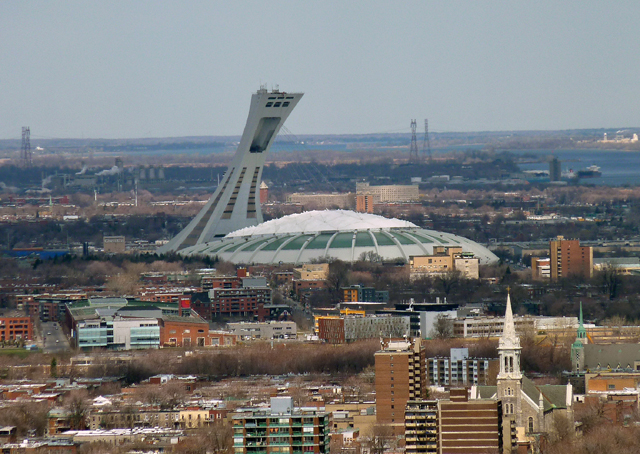Betting on Kevlar: tomorrow's wonder material?


Is Kevlar one of the architectural wonders of the future? In Ellen Kullman’s opinion, it’s a slam-dunk. The DuPont CEO -- the first woman to ever hold the job -- traveled to Bushy Park, South Carolina, in early October to inaugurate a $500 million plant expansion. The plan: Ramp up production of the powerfully tensile synthetic fiber, gambling on steadily growing demand, according to Thomas Powell, president of DuPont Protection Technologies.
As the business name suggests, Kevlar has become synonymous with post-9/11 security and safety uses, from bulletproof vests to armored walls for panic rooms. Strong, stiff and lightweight, the compacted blend of fabric and glass also should be ideal for building cladding, reinforcing and fabric roofs. A few high-profile architects dabbled with it recently. Has Kevlar’s time finally come?
I'm not so sure. First, the negatives: Four decades after its debut in Formula 1 racing tires, Kevlar is still pricey and highly proprietary. Construction uses have lagged. Manufacturers see it as a fungible commodity, sometimes choosing look-alikes such as Twaron, a Dutch product, or Heracron. But last month, a jury decided that Heracron fibers were infringing on DuPont’s secret formula, ordering South Korean maker Kolon to pay close to $920 billion in damages.
A sketchy start
In the architecture world, Kevlar suffered from false starts. The spectacularly unsuccessful roof for Montreal’s Olympic Stadium, designed by architect Roger Taillibert with engineer Luc Lainey around 1976, featured a dramatic leaning tower and Kevlar-fortified retractable fabric spans. The overpromising monument took a decade to complete and only survived another ten years.
A revival in Kevlar apps came after Hurricane Andrew with Miami’s new building codes for storm resistance and, a decade later, security concerns following the September 11 attacks. Architects and security experts gravitated to more resilient façade claddings and structures, such as Alcoa’s Reynobond, which combined aluminum composite with a thin Kevlar fabric layer as an optional, impact-proof spec.
A flurry of building products came on the market, from fiberglass panels and concrete repair patches to new molded furniture designs. Kevlar became a standard-bearer for resilient building products, but avant-garde designers saw wilder possibilities. California architect Peter Testa designed amazing, space-age storefronts and spider-web installations from Kevlar-carbon panels and woven mesh. Then the French firm Serero unveiled a super-lightweight Kevlar netting to expand the Eiffel Tower’s observation deck, proclaiming it winner of a competition to honor the landmark’s anniversary.
The announcement was a hoax. But somehow the mention of DuPont’s product made their fantastic scheme seem all the more likely.
Real-world performance
In the real world, architects favor Kevlar for two reasons, and both are about performance: It’s lightweight and easy to integrate. A thin blanket can serve as structural reinforcement or ballistic protection, everywhere from seismic shear walls to bank counters. Sprinkle the fibers into carbon composites to cut weight and boost strength: The grades Kevlar 49 and 149 are the lightest and most robust; Kevlar 29 is comparable in potency to glass fiber, but weighs less.
The fact is, Kevlar and its aramid cousins can -- and should -- revolutionize how we build. To a large extent, it’s up to manufacturers and fabricators to bring architects less expensive applications of
the fibers for building products. Calculations for building designs are complex. And Kevlar fabrics are tricky for contractors to install unless built into pre-engineered kits.
Costs need to come down, too. Just like the Formula 1 racers in the 1970s, building designers like Kevlar’s turbo boost. But today, even architects who look carefully under the hood will likely get sticker shock when much cheaper alternatives abound.
This post was originally published on Smartplanet.com